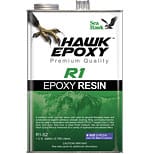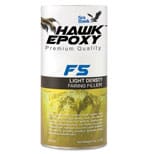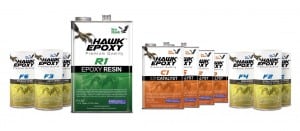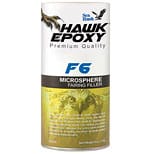 What is Fairing?
What is Fairing?
Fairing is process of smoothing out and restoring the damaged surface of the hull. A fairing compound such as Epoxy resin can be used to fill in divots or gouges and then be sanded to a smooth finish. This restores the surface to its original shape and also prepares it for painting.
Note: Before attempting a repair by yourself, get a professional opinion. Always wears Personal Protective Equipment when sanding or working with chemical compounds!
Here are some guidelines to fairing out imperfections in your hull:
- Sand all loose surface debris and hard edges.

- Rid surface of debris with clean cloth.
- Wet out surface with Hawk Epoxy.
- Mix another batch of Hawk Epoxy with F5 Light Density Filler and apply to repair area.
- Use long strokes to spread out filler compound over the damaged hull. Apply until the mixture is slightly raised above the hull surface. Make sure the compound extends beyond the repair area.
- Let cure 6 hours.
- Add skim coat of F5 Filler / Epoxy compound to achieve a very smooth surface. Let cure.
- Sand the repair to the desired shape with 80 grit sandpaper.
- Finish by applying another 2 or 3 layers of Hawk Epoxy Resin.
- The surface is ready to be painted!
Hawk Epoxy Video Tutorial
For more information see these other How To Articles:
How Do I Choose Hawk Epoxy Catalyst and Fillers?
How to Mix Hawk Epoxy Resin Properly
How to Get Strong Hardware Adhesion with Hawk Epoxy

 Make sure the blisters are thoroughly drained and grind them deep enough to remove any damaged material beneath the gelcoat. Increase size of ground area as needed until all the laminate around the blister is sound. Clean the entire area and allow it time to dry.
Make sure the blisters are thoroughly drained and grind them deep enough to remove any damaged material beneath the gelcoat. Increase size of ground area as needed until all the laminate around the blister is sound. Clean the entire area and allow it time to dry. The filler recommended for blister repair is F6 MicroSphere Fairing Filler.
The filler recommended for blister repair is F6 MicroSphere Fairing Filler.